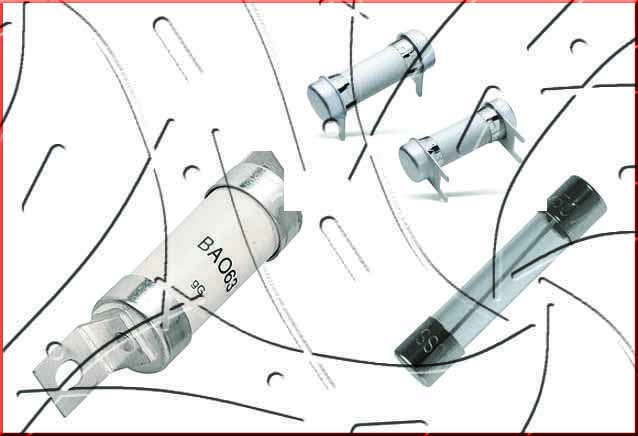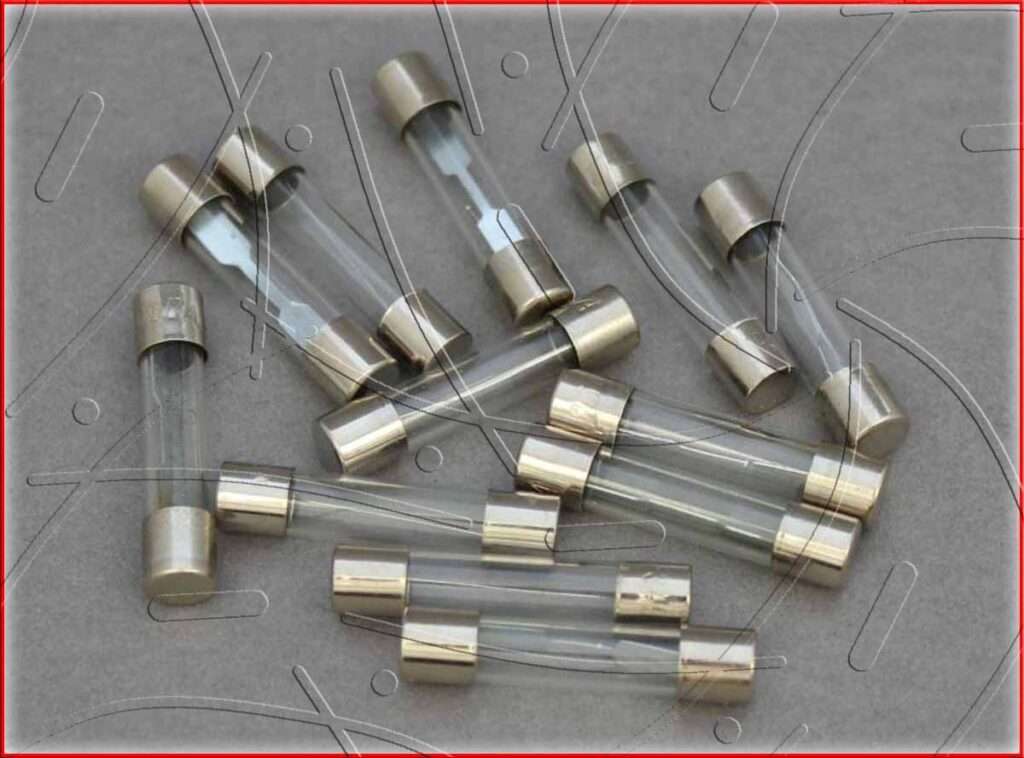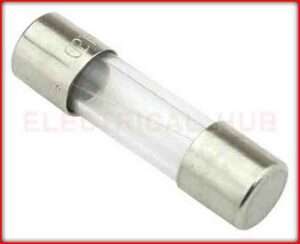Cartridge Fuses: Important Types and Selection Table
Cartridge fuses are a fundamental component in electrical systems, providing essential protection against overcurrent conditions. These fuses consist of a fuse element enclosed within a cylindrical housing, offering a reliable and easily replaceable solution for safeguarding various circuits and appliances.
Read More
Cartridge Fuses
Curious about the role of cartridge fuses in electrical safety? Explore the world of cartridge fuses, their functionality, and applications in diverse settings. Learn how these fuses, available in various types and ratings, contribute to safeguarding circuits and appliances. Discover the significance of choosing the right cartridge fuse for optimal electrical protection.
In this article, we will delve into the intricacies of cartridge fuses, their applications, and their significance in maintaining electrical safety.
Functionality of Cartridge Fuses
At the core of cartridge fuses is a fusible element made from materials with low melting points. When the current flowing through the circuit exceeds a certain threshold, the element heats up and melts, causing an interruption in the circuit. This break prevents excessive current from damaging appliances or causing fires.
The cylindrical housing of the fuse not only contains the element but also provides a degree of protection against environmental factors and accidental contact.
Types of Cartridge Fuses
Cartridge fuses come in various types to cater to diverse applications. These include:
Fast-Acting Cartridge Fuses: These fuses respond quickly to overcurrent conditions, providing rapid circuit interruption. They are commonly used to protect sensitive electronics and devices that require prompt disconnection to prevent damage.
Time-Delay Cartridge Fuses: Also known as slow-blow fuses, these variants have a delayed response to overcurrent. They tolerate short-term current surges, making them suitable for protecting motor circuits and inrush currents that occur during equipment startup.
Parameters of Cartridge Fuses
These fuses are integral components of electrical systems, designed to provide protection against overcurrent conditions. Understanding the key parameters of fuses is essential for selecting the right fuse for a specific application. Let’s discuss the fundamental parameters that define the functionality of cartridge fuses.
Current Rating (Amps): The current rating indicates the maximum current that the fuse can safely carry without blowing. It is often denoted in amperes (A). Choosing a cartridge fuse with the appropriate current rating ensures that the circuit is protected while allowing the intended load to operate safely. For example, a 10A fuse is designed to handle currents up to 10 amps.
Voltage Rating (Volts): The voltage rating represents the maximum voltage at which the fuse can operate safely. It ensures that the fuse can interrupt the circuit without arcing or damaging internal components. It’s crucial to select a cartridge fuse with a voltage rating that matches the circuit it will be protecting.
Breaking Capacity (kA): The breaking capacity, also known as the interrupting capacity, indicates the maximum fault current that the fuse can safely interrupt without damage. It’s crucial to choose a fuse with a breaking capacity higher than the maximum fault current that could occur in the circuit. For example, a cartridge fuse with a breaking capacity of 6kA can handle fault currents up to 6,000 amps.
Time-Current Characteristics: Cartridge fuses have specific time-current curves that illustrate their response time to different levels of overcurrent. These curves help in selecting the right fuse for the desired level of protection. Faster-acting fuses respond more quickly to overcurrent conditions, while slower-acting fuses tolerate temporary current surges.
Physical Size: The physical dimensions of a cartridge fuse are essential for proper installation and compatibility with fuse holders. Cartridge fuses come in various sizes, often standardized based on international standards.
Fuse Type: These fuses come in different types, each with specific characteristics. Fast-acting fuses provide rapid interruption, while time-delay fuses tolerate short-duration current surges. Choosing the right fuse type depends on the application’s requirements and the characteristics of the circuit.
Body Material and Construction: Cartridge fuses are constructed using different materials to withstand the mechanical and thermal stresses during operation. The fuse’s body material and construction influence its overall performance and reliability.
Selection Table for Cartridge Fuses
Here’s a comprehensive selection table for Cartridge Fuses based on their rated parameters. Remember that this table is a general guideline, and specific requirements may vary based on regional standards, regulations, and applications.
| Rated Current (Amperes) | Rated Voltage (Volts) | Breaking Capacity (kA) | Speed | Typical Applications |
| 1A | 230V, 400V | Up to 50kA | Fast | Electronics, low-power devices |
| 2A | 230V, 400V | Up to 50kA | Fast | Lighting circuits, control circuits |
| 6A | 230V, 400V | Up to 50kA | Fast | Residential circuits, small appliances |
| 10A | 230V, 400V | Up to 50kA | Fast | General-purpose circuits, lighting |
| 16A | 230V, 400V | Up to 50kA | Fast | Power outlets, light industrial |
| 20A | 230V, 400V | Up to 50kA | Fast | Air conditioning units, appliances |
| 32A | 230V, 400V | Up to 50kA | Fast | Heavy-duty appliances, machinery |
| 40A | 230V, 400V | Up to 50kA | Fast | Industrial equipment, large power requirements |
| 63A | 230V, 400V | Up to 50kA | Fast | High-power equipment, distribution panels |
| 100A | 230V, 400V | Up to 50kA | Fast | Industrial machinery, power-intensive applications |
This detailed selection table for cartridge Fuses takes into account various parameters including rated current, rated voltage, breaking capacity, and speed. However, remember to consider other factors such as specific application requirements and coordination with other protective devices for accurate selection.
Applications of Cartridge Fuses
These fuses find widespread application in residential, commercial, and industrial environments due to their versatility and reliability. Examples of specific applications and corresponding fuse ratings include:
Residential Lighting Circuit: A 10A cartridge fuse can be used to protect a lighting circuit in a home. This ensures that the circuit is safeguarded against overcurrent, preventing damage to light fixtures and potential fire hazards.
Air Conditioning Unit: For an air conditioning unit in a commercial building, a 20A cartridge fuse might be employed. This ensures that the AC unit is adequately protected, preventing any excessive current from damaging the appliance.
Industrial Machinery: In an industrial setting, a 100A cartridge fuse could be utilized to protect heavy machinery from overcurrent conditions. This robust fuse rating ensures that the machinery operates safely without risking equipment damage.
Subscribe to our Newsletter “Electrical Insights Daily” to get the latest updates in Electrical Engineering. You can also Follow us LinkedIn and Facebook to see our latest posts on Electrical Engineering Topics.
Worth Read Posts
Subscribe to our Newsletter “Electrical Insights Daily” to get the latest updates in Electrical Engineering. You can also Follow us on LinkedIn and Facebook to see our latest posts on Electrical Engineering Topics.




